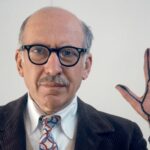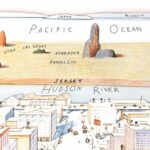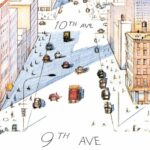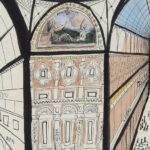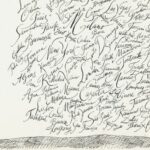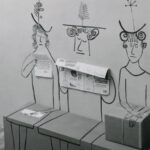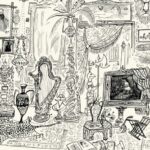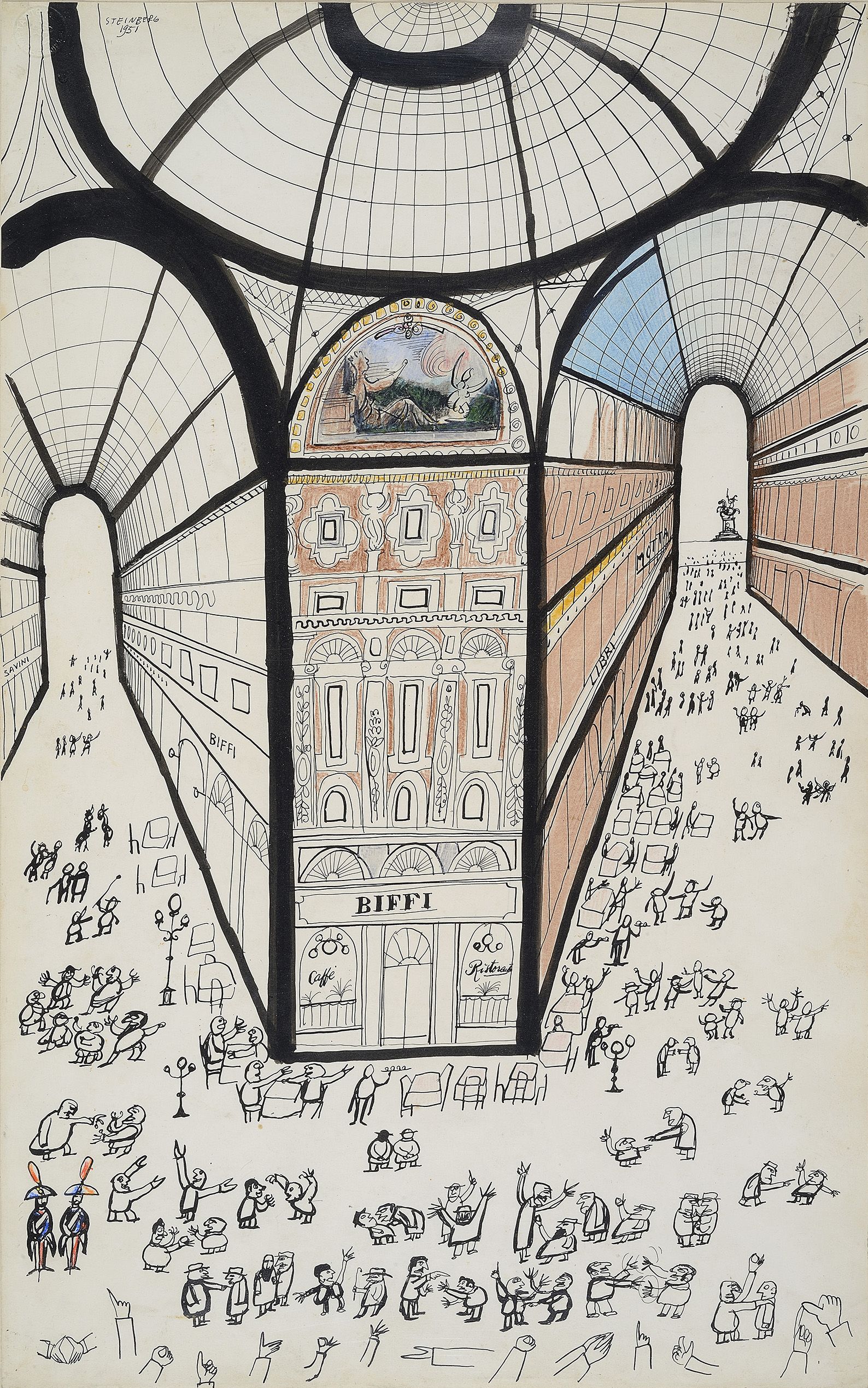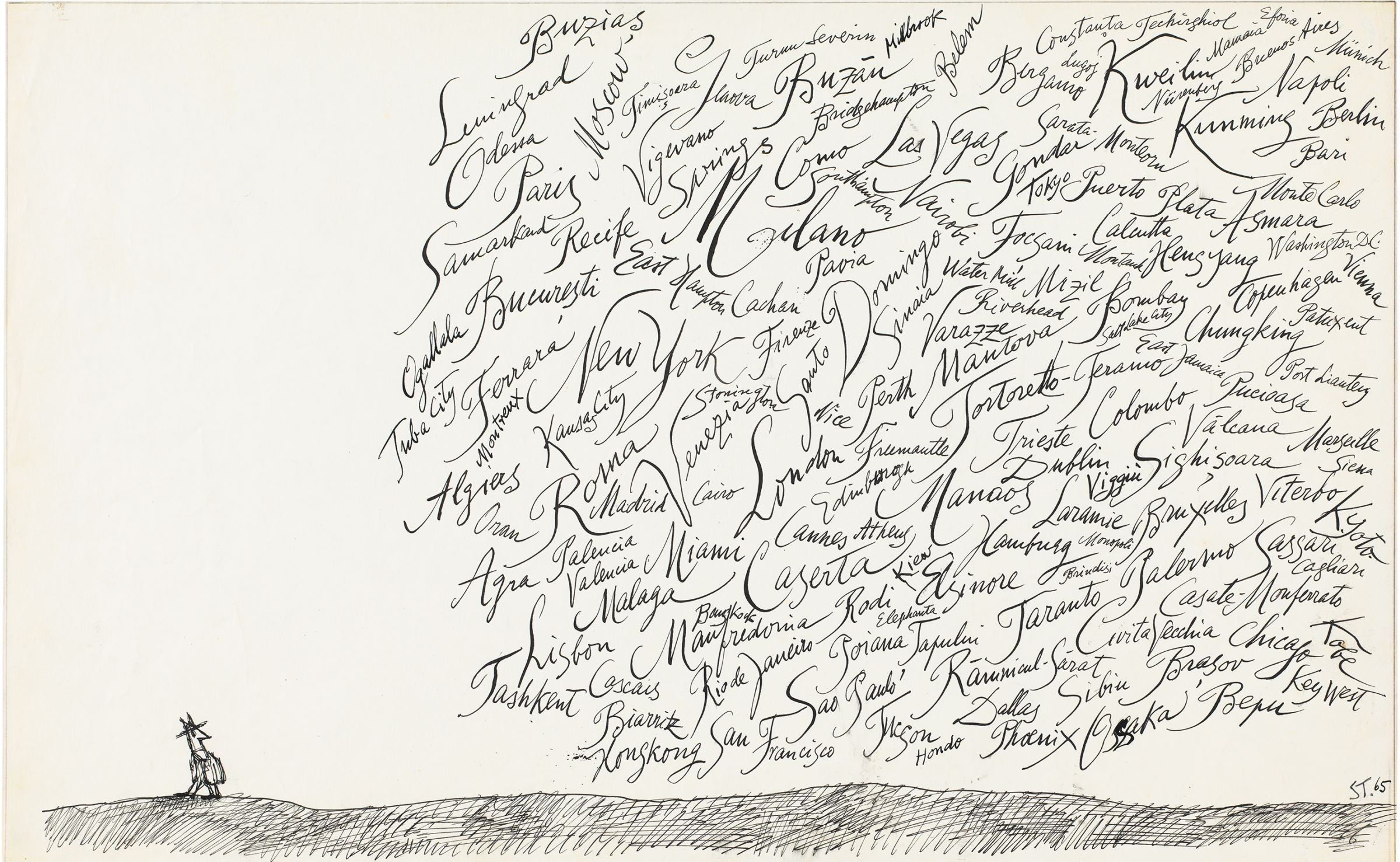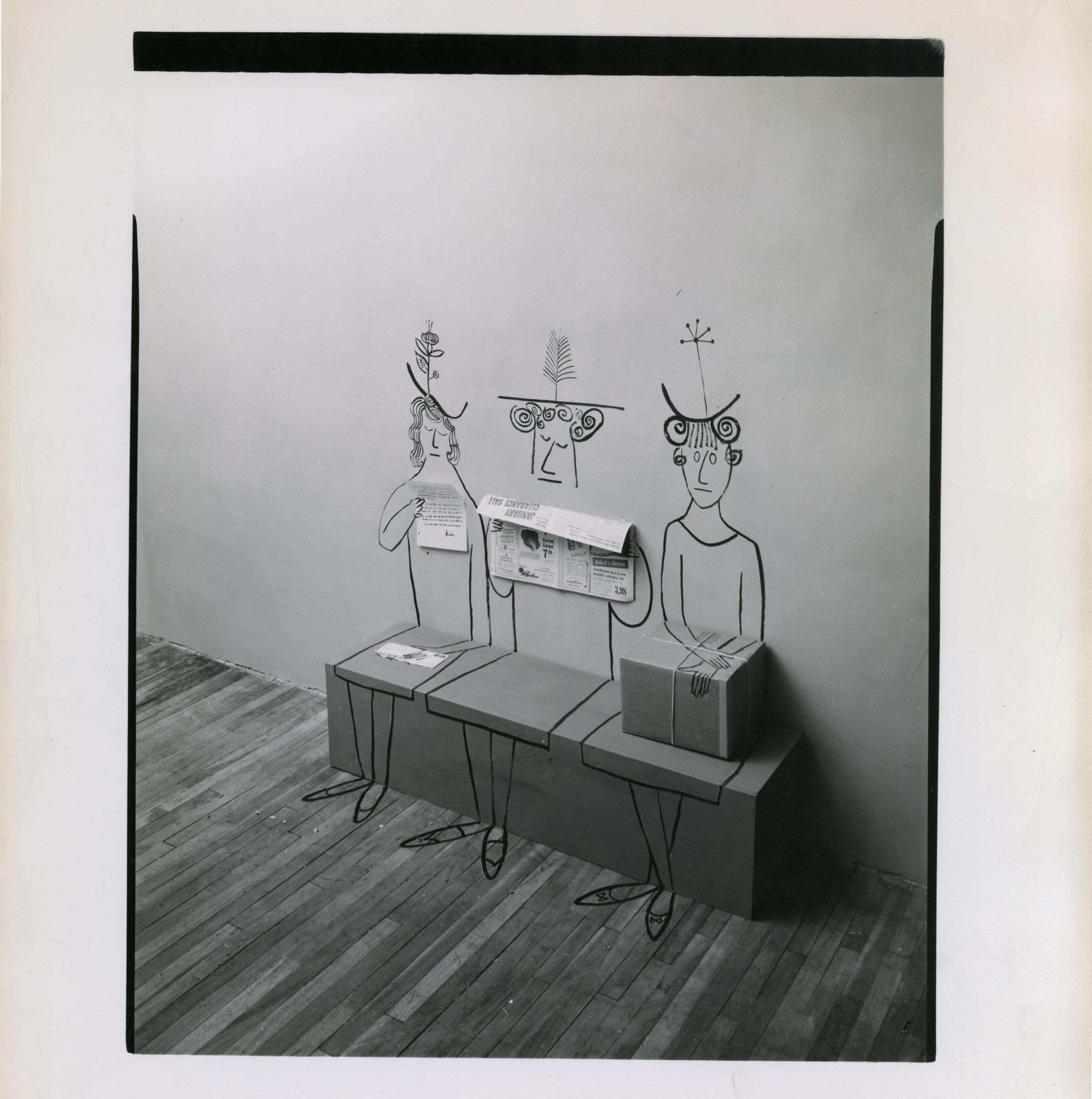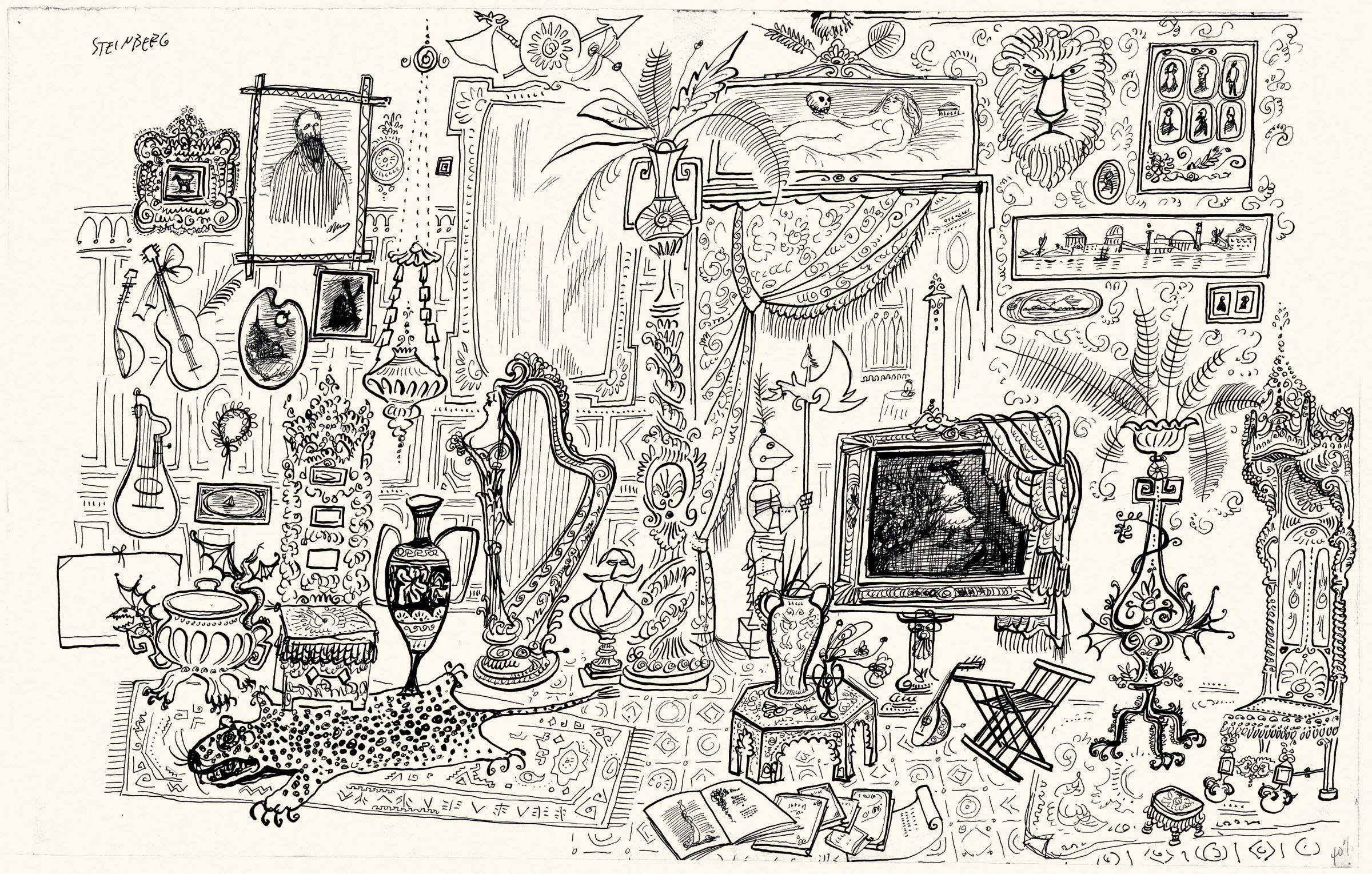Text: Ştefan Davidovici
Steinberg is for me, first of all, the New Yorker magazine – one of the most intelligent and open American publications, with a very distinct graphic style that includes a generous use of drawings and cartoons, born and fed by the amazingly rich cultural landscape of New York City. I see New York as, first of all, the place that learnt like no other city how to embrace without inhibitions foreign people and cultures, and make them its own while letting them be themselves. This is the story of Saul Steinberg, born and raised in Ramnicu Sarat and Bucharest, educated in Milan, that survived fascism and war to bring his Eastern-European accent and irony to New York, and draw his trace there.
Don’t think it’s very relevant, but biographically speaking, I got many things in common with Steinberg. We belong, evidently, to very different generations, and had very different life experiences. His native Romania is literally another country than my own, so fundamentally changed almost one hundred years after he left in 1933. If I do feel a personal connection to him, maybe it comes more from my records of my grandfather than from what I know of the real Steinberg. Still, we are both Romanian Jews. We are both architects. We both draw. We both have deep links to North America and to Italy. And indeed all this did give me a weird feeling, when I was looking at his drawings, pictures and documents, exposed now at Milan’s Triennale. These few reflections are the most important ideas and feelings left in me, after having seen this exhibition.
 *Evelyn Hofer, Saul Steinberg with his hand, New York 1978, © Estate of Evelyn Hofer
*Evelyn Hofer, Saul Steinberg with his hand, New York 1978, © Estate of Evelyn Hofer
The world map.
The first drawing of Steinberg I remember having seen is a world map. It’s not a regular map, of course, but a view the world as seen by someone that considers Manhattan the undisputed centre of the Universe. Even the nearby New Jersey, more or less the equivalent of Judetul Ilfov perceived from Bucharest, is just a faraway strip of unclear buildings gathered on the other side of the Hudson. Everything beyond is small, superficial, reduced to a couple of iconic landmarks, foreign countries become a bare name beyond a line, and all this is really so much so way each human, from New York or not, sees the world. Because each one of us is enclosed within his/her own self. One’s tooth ache is more painful than the Vietnam war. Each one’s home kitchen is bigger than Tour Eiffel and the pyramids of Egypt put together.
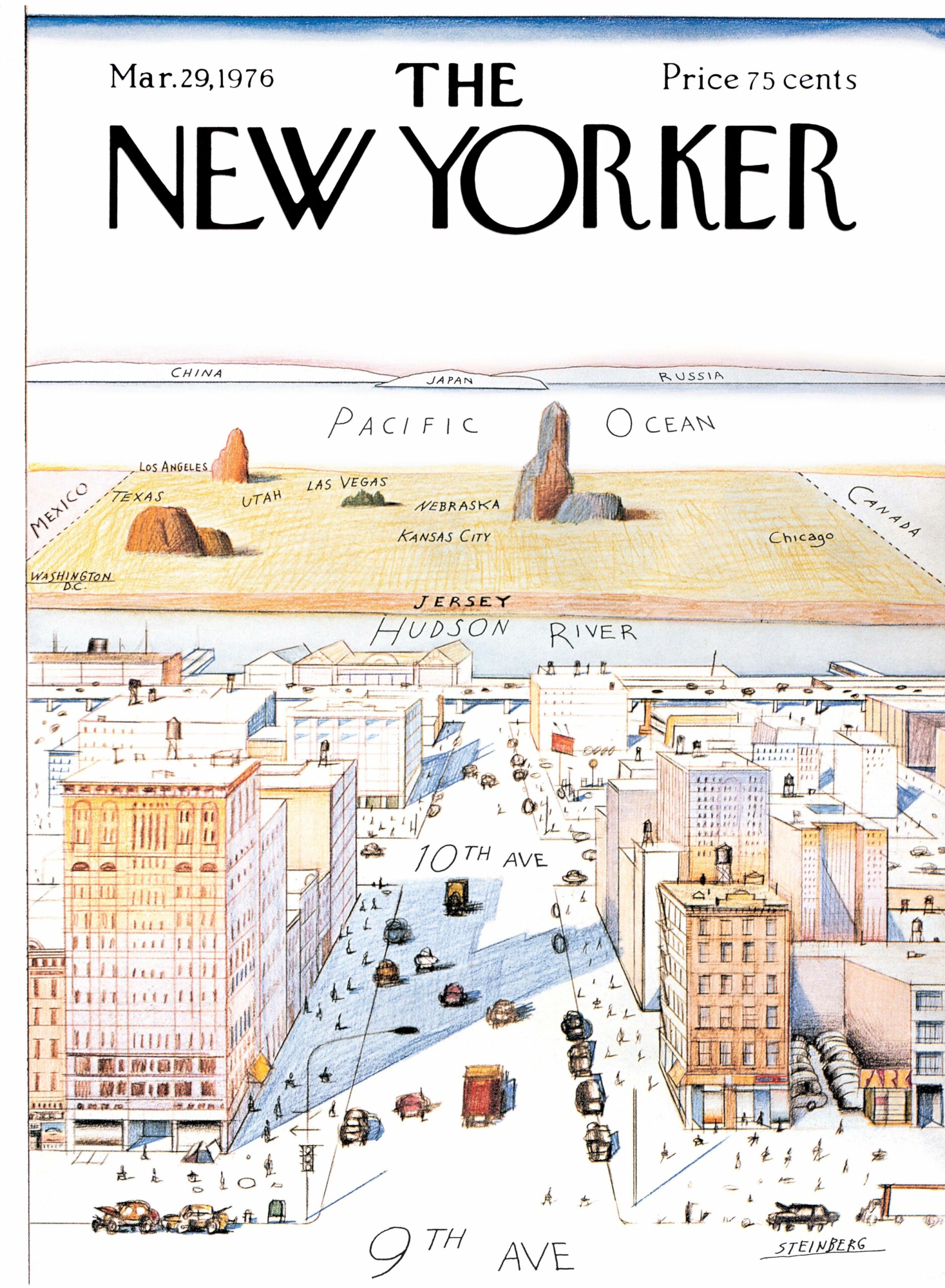 Saul Steinberg, Cover of The New Yorker, Mar.29, 1976
Saul Steinberg, Cover of The New Yorker, Mar.29, 1976
© The Saul Steinberg Foundation /ArtistsRights Society (ARS), New York
Drawing, not painting.
Steinberg found painting – as well as sculpture and writing – boring, or at least too rich, too complex, a ‘waste of time that avoids the essence of things’. Drawing on the other hand was for him light, clear, essential – it transmits only and exactly what’s really important. Steinberg doesn’t only draw figures, spaces, objects, but has the courage to put on paper, and made clear and visible, abstract notions like words, conversations, even life pure and simple!
From regular sketch to the next step.
The exhibition is full of sketches. Steinberg was reflecting reality through sketches in the very same way every architecture student still does today. Perspective, vanishing point… obviously he mastered them perfectly but all of a sudden, at a certain point in time, he stopped caring about them anymore!
It is not that he forgot how to find the vanishing point. His drawing – like in his depiction of the iconic Galleria Vittorio Emanuele – has become so essential that it actually goes beyond perspective.
*Saul Steinberg, Gallery of Milan, 1951. Ink, grease pencil and watercolour on paper. Private collection© The Saul Steinberg Foundation/Artists Rights Society (ARS) New York
The Galleria – heart and soul of Milan – is for some reason, despite its complexity, a preferred subject for the sketches of my first-year students. Steinberg’s drawing of it is eerily similar precisely to the less complex, most primitive, childish of them all. It has only a few details, the perspective is approximate and the horizon line is way up at the fourth floor. At first sight it is anything but an ‘educated’, drawing. But if you look better you understand that Steinberg, simply, doesn’t consider important anymore where is the horizon line. His drawing is perfect. It represents exactly what one remembers from the Galleria, one or five or twenty years after seeing it. The space, the crowds, are all there. Just please don’t tell all that to my students.
[The exhibition Saul Steinberg Milano New York was hosted by the Triennale di Milano until March 13 2022. Details: https://triennale.org/en/events/saul-steinberg]
Bucharest.
In a drawing made from memory many years after he left Romania, a street of Bucharest, in the Uranus neighbourhood, with the two waves of construction that defined the city at his times, the older end-of-800s ‘vagon’ houses and the rationalist buildings of the 30s and 40s. It’s so Bucharest, this drawing, I recognize it easily, even though the ‘oltean’ peasant carrying water and the wooden cart roaming the centre of the city that inhabit the drawing were already history during my childhood, not far from the very same streets.
Carrying the world with you. Wherever we go we take our world with us. Can’t go anywhere without carrying with me all the people I met. All the winters I’ve passed through. All the mountains I climbed. All the places I’ve been through. They all form a kind of huge cloud floating behind us, and Steinberg makes it visible. This drawing is nothing but our own memory. (So pleasant, for a Romanian, to see between ‘Tokyo’, ‘Paris’ and ‘New York’, ‘Buzias’ and ‘Ramnicul Sarat’.)
*Saul Steinberg, Untitled, 1965 ink and pencil on paper
The Saul Steinberg Foundation, New York
© The Saul Steinberg Foundation/Artists Rights Society (ARS) New York
Some drawings jump out of the sheet.
By their very nature, all drawings are blocked in the two dimensions of their sheet. Steinberg makes them jump out of the sheet, lets the drawing flow to real furniture, boxes, walls, generously offering the missing third dimension to people, cats, and dogs. It is such a simple gesture and however it is an incredibly dramatic one – literally changing the rules of the game.
*Saul Steinberg, Senza titolo, c.1950, silver gelatin print
The Saul Steinberg Foundation
© The Saul Steinberg Foundation/Artists Rights Society (ARS) New York
Steinberg had an ambiguous relationship with architecture.
He studied it, evidently understood it very well, but never practiced it and never seemed to miss it too much.
Why should his work be considered even more relevant for architects more than for the general public?
Because he reminds us that in our work is always important to look for the essential.
To be concise and clear.
To take care not to lose our main focus because of details – not to see the forest because of the trees.
To have the courage to look for the “deep” structure of things – the “engine” of any form of art including architecture, and the essence of what we transmit through our creations – everywhere, including in the structure of our own lives.
To be humble, accept as normal that we are small, temporary beings that can’t leave many traces, and to get, while here, a good laugh at all this.
*Steinberg, Untitled, 1954, ink over pencil on paper
The Saul Steinberg Foundation, New York
© The Saul Steinberg Foundation/Artists Rights Society (ARS) New York

